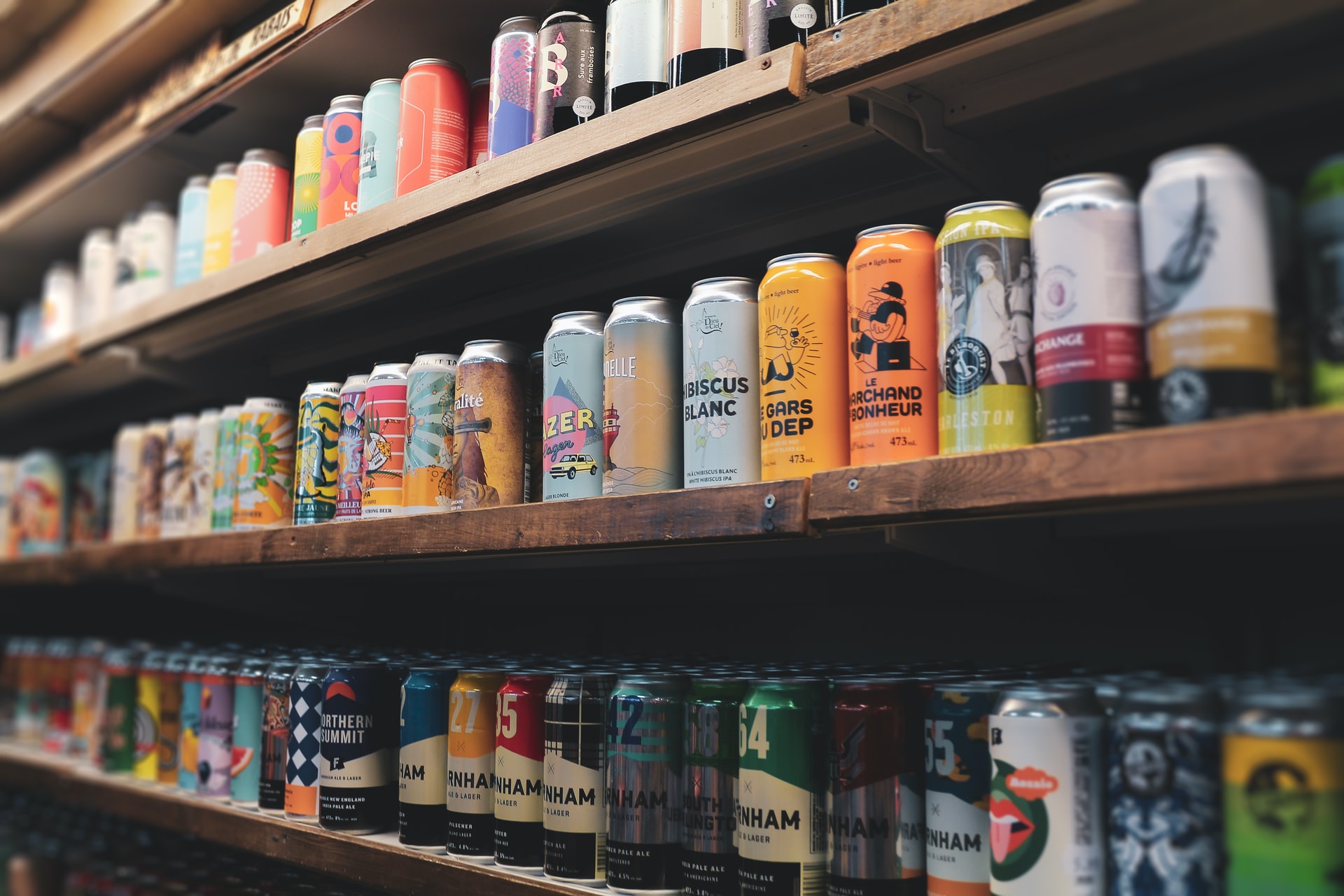One weird side effect of the COVID-19 shutdown that no one expected was the Great Aluminum Can Shortage (or “Can-Demic”) of 2020. With the appeal of aluminum-contained ready-to-drink beverages at an all time high, this was especially problematic for bars, restaurants, and other small businesses offering alcohol service as they were unable to keep some of their best sellers stocked in their inventory.
Demand for aluminum cans in the US rose 7 percent last year, in part because of hard seltzer’s newfound popularity. Canned beer already cornered the market in many establishments, and the explosion of new seltzer brands and premixed cocktails meant that, for a while, aluminum can production couldn’t keep up, leading to low stock in both big box stores as well as small town speakeasies.
Aluminum can sales have chilled out now that winter is here and canned bevs are less in demand. Aluminum production has also stabilized and bar owners and restaurateurs are unlikely to face a shortage like the 2020 Can-Demic again. Nevertheless it’s important to prepare should we find ourselves facing another whiteclaw famine. Here’s how.
How producers are handling the aluminum can shortage
Alcohol producers have had to adapt their canning practices, and are either finding new ways to source their cans, or getting creative with how they bottle their beverages in the face of aluminium shortages.
Major beer brands are able to simply source their cans from overseas, but that’s not always an option for smaller producers. To make it work for them, some hard kombucha manufacturers are once again leaning on glass as their containers of choice for many of their products. Other small batch and craft beer producers are reallocating their cans to their most popular varieties, taking the lower-performing labels off the shelf for now. And a few ready-to-drink cocktail producers are taking a bagged-wine approach, selling their bevs in portable pouches.
Producer ingenuity means fewer shortages for public-facing establishments down the line. But there are a few extra steps bars and restaurants can take to make sure they can keep their customers happy in case of a boxed-cocktail bottleneck in the future.
How you can manage your aluminum can inventory
Here are 4 steps to take that will help your establishment make it through the next Can-Demic.
Look for alternatives to traditional cans
There are plenty of alternative materials on the market that are just as good at holding their beer as the aluminum can. Plastic bottles, glass bottles, pouches, paper-based boxes, and more can be swapped out easily and effectively. Keep in mind that the material costs will be different -- glass for example is much more expensive than aluminum, especially at volume.
One approach you might try which addresses both can shortages and social distancing mandates that may still be active in your area is having a BYOB policy for draft drinks and craft cocktails. Ask customers to bring their own jars, cans, coffee mugs, or bottles with them for a discount on some of your house beverages.
Market draft products
Peak your customer’s curiosity and save money for your establishment by pushing your draft products like kegged beer and on-tap cocktails. Kegs can get recycled and drive down cost for any restaurant or bar as the equivalent expenditure for a case of single-serving aluminum beer cans typically tacks on an additional 20%.
And it’s not just beer you can serve by the half-barrel -- many hard seltzer producers, kombucha makers, and more are now offering their beverages by the keg.
Respond to aluminum can market costs and pass on to customers
The worst case scenario is that your establishment will have to fight tooth and claw for the last few cases of a given canned drink -- likely paying out the nose for it. This will inevitably drive your prices up and you may find yourself asking for many more dollars than any customer would normally spend on a can of Barefoot Bubbly. If this does happen, make sure you’re up front with your customers about why, and have a list of alternatives for them if cost becomes too much of an issue.
Alternatively, you can be upfront with your customers about how supply chain issues mean their favorite drink isn’t in stock and use that as an opportunity to introduce local, novel, or in-house specialties to your thirsty regulars.
Buy extra when you can
The nice thing about alcohol’s long shelf-life is that you can stock up while the getting’s good, leaving you flush in times of famine. This means you can order your aluminum cases while demand is low without fear of running out in the face of another shortage.
The downside of this strategy is that you need to have the extra storage in order to make it work, so smaller establishments might not be able to take this approach. The other piece is that you run the risk of having dead stock on your hands if the seltzer craze blows over and no one wants to touch your hoard of Viv and Ava.
Still, this can be a good strategic play if you have the space and trust that you can move the stock.
How Provi can help
Provi is an all-in-one beverage ordering solution that allows you to interact with your reps, keep track of your inventory, and restock your stores in less than 5 minutes, all from one convenient platform. With Provi, you won’t be caught off guard by another aluminum can shortage as our communications and inventory strategies will allow you to plan for leaner months well in advance. Talk to one of our reps today to see if Provi is right for you.



Comments